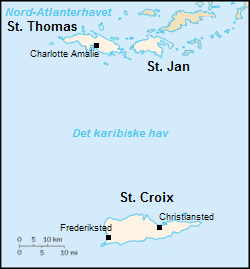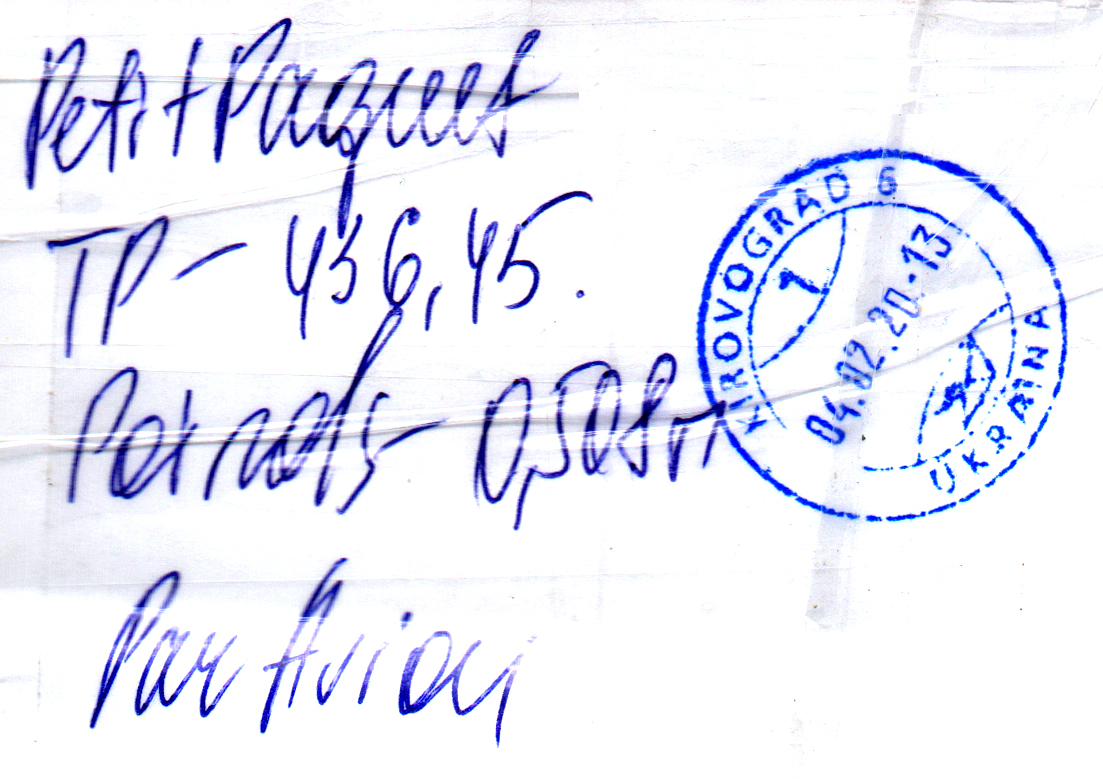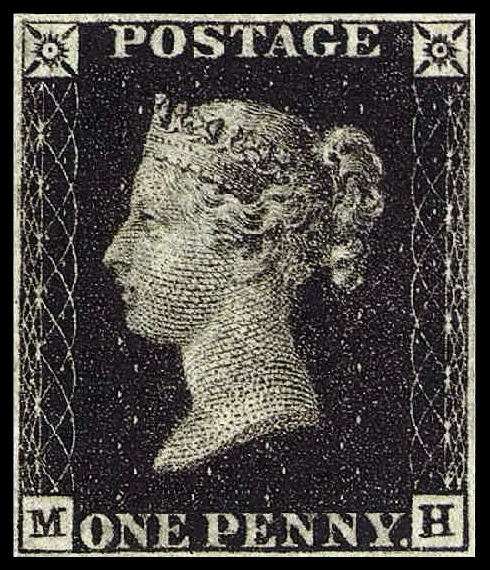|
Fletcher Collection
The Fletcher Collection is Hugh Greenwell Fletcher's lifetime philatelic collection of British postage stamps and British stamps used abroad including overprints and non-stamp items such as postal stationery. On his death in 1968 (aged 86), the collection was bequeathed to the Bruce Castle Museum in Tottenham, once the home of Rowland Hill (postal reformer), Sir Rowland Hill. The collection was donated to the British Library in 1989. Description Half of the collection is of Pre-adhesive mail, pre-adhesive material. There is a 1682 letter carried by the William Dockwra's original London Penny Post, and a study of the handstamps once the government took over the service. The collection includes a group of early 19th century 5th Clause Posts.An Act of Parliament in April 1801 meant that all postage rates were increased, the 5th Clause allowed the Postmaster General to collect and deliver letters to and from towns and villages surrounding a Post Town at such charges as were agreed wit ... [...More Info...] [...Related Items...] OR: [Wikipedia] [Google] [Baidu] |
Dockwra Post 1682
Docwra, also with spelling Dockwra, Dockwray, Dockray and other variants, is an English language surname, of Norse-Viking origin, which was significant in London and East Anglia in the 17th century. It may refer to: *Anne Docwra (1624–1710), English Quaker minister, religious writer and philanthropist *Edmund Docwra (fl.1571–2), English politician, father of Henry, 1st Baron Docwra *Graham Dockray (born 1946), British physiologist *Henry Docwra, 1st Baron Docwra (1564–1631), English-born soldier and statesman in Ireland *Mary Dockray-Miller (born 1965), American medievalist *Thomas Docwra (1458?–1527), Grand Prior of the English Knights Hospitaller *Tracy Dockray (born 1962), American artist *William Dockwra (c.1635–1716), English merchant {{surname Docwra family, * English-language surnames ... [...More Info...] [...Related Items...] OR: [Wikipedia] [Google] [Baidu] |
Penny Black
The Penny Black was the world's first adhesive postage stamp used in a public postal system. It was first issued in the United Kingdom (referred to in philatelic circles as Great Britain), on 1 May 1840, but was not valid for use until 6 May. The stamp features a profile of Queen Victoria. In 1837, British postal rates were high, complex and anomalous. To simplify matters, Sir Rowland Hill proposed an adhesive stamp to indicate pre-payment of postage. At the time it was normal for the recipient to pay postage on delivery, charged by the sheet and on distance travelled. By contrast, the Penny Black allowed letters of up to to be delivered at a flat rate of one penny, regardless of distance. Treasury competition On 13 February 1837, Sir Rowland Hill proposed to a government enquiry both the idea of a pre-paid stamp and a pre-paid envelope, a separate sheet folded to form an enclosure for carrying letters. Hill was given a two-year contract to run the new system, and tog ... [...More Info...] [...Related Items...] OR: [Wikipedia] [Google] [Baidu] |
British Library Philatelic Collection
The British Library Philatelic Collections is the national philatelic collection of the United Kingdom with over 8 million items from around the world. It was established in 1891 as part of the British Museum Library, later to become the British Library, with the collection of Thomas Tapling. In addition to bequests and continuing donations, the library received consistent deposits by the Crown Agency and has become a primary research collection for British Empire and international history. The collections contain a wide range of artefacts in addition to postage stamps, from newspaper stamps to a press used to print the first British postage stamps. History The first notable philatelic donation was in 1890 by Hubert Haes of two albums of postage stamps collected by himself and Walter Van Noorden. It was donated with the request that the British Museum library (now the British Library) would create a philatelic collection. The following year the Collections were estab ... [...More Info...] [...Related Items...] OR: [Wikipedia] [Google] [Baidu] |
West Africa Study Circle
The West Africa Study Circle (WASC) is the "international specialist society for the study of stamps, postal stationery and postal history of West Africa." West Africa Study Circle, 28 November 2011. Retrieved 12 March 2012. The Circle publishes a regular journal, ''Cameo'', and books and monographs. The principal areas covered by the society are the philately
Philately (; ) is the study of postage stamps and postal history. It also refers to the collection and appreciation of stamps and other philatelic products. Philately involves more than just stamp collecting or the study of postage; it is poss ... of:
*Ascension
*The Cameroons
*Gambia
*Gold Coast/Ghana
*Nigeria
*St. Helena
*Sierra Leone
*Togo
*Tristan da Cunha/G ...
[...More Info...] [...Related Items...] OR: [Wikipedia] [Google] [Baidu] |
Beirut
Beirut, french: Beyrouth is the capital and largest city of Lebanon. , Greater Beirut has a population of 2.5 million, which makes it the third-largest city in the Levant region. The city is situated on a peninsula at the midpoint of Lebanon's Mediterranean coast. Beirut has been inhabited for more than 5,000 years, and was one of Phoenicia's most prominent city states, making it one of the oldest cities in the world (see Berytus). The first historical mention of Beirut is found in the Amarna letters from the New Kingdom of Egypt, which date to the 14th century BC. Beirut is Lebanon's seat of government and plays a central role in the Lebanese economy, with many banks and corporations based in the city. Beirut is an important seaport for the country and region, and rated a Beta + World City by the Globalization and World Cities Research Network. Beirut was severely damaged by the Lebanese Civil War, the 2006 Lebanon War, and the 2020 massive explosion in the ... [...More Info...] [...Related Items...] OR: [Wikipedia] [Google] [Baidu] |
Nicaragua
Nicaragua (; ), officially the Republic of Nicaragua (), is the largest country in Central America, bordered by Honduras to the north, the Caribbean to the east, Costa Rica to the south, and the Pacific Ocean to the west. Managua is the country's capital and largest city. , it was estimated to be the second largest city in Central America. Nicaragua's multiethnic population of six million includes people of mestizo, indigenous, European and African heritage. The main language is Spanish. Indigenous tribes on the Mosquito Coast speak their own languages and English. Originally inhabited by various indigenous cultures since ancient times, the region was conquered by the Spanish Empire in the 16th century. Nicaragua gained independence from Spain in 1821. The Mosquito Coast followed a different historical path, being colonized by the English in the 17th century and later coming under British rule. It became an autonomous territory of Nicaragua in 1860 and its northernmost part ... [...More Info...] [...Related Items...] OR: [Wikipedia] [Google] [Baidu] |
Danish West Indies
The Danish West Indies ( da, Dansk Vestindien) or Danish Antilles or Danish Virgin Islands were a Danish colonization of the Americas, Danish colony in the Caribbean, consisting of the islands of Saint Thomas, U.S. Virgin Islands, Saint Thomas with ; Saint John, U.S. Virgin Islands, Saint John ( da, St. Jan) with ; and Saint Croix with . The islands have belonged to the United States since they were Treaty of the Danish West Indies, purchased in 1917. Water Island, U.S. Virgin Islands, Water Island was part of the Danish West Indies until 1905, when the Danish state sold it to the East Asiatic Company, a private shipping company. The Danish West India Company, Danish West India-Guinea Company annexed uninhabited St. Thomas in 1672; annexed St. John in 1718; and bought St. Croix from France (King Louis XIV) on June 28, 1733. When the Danish West India-Guinea Company went bankruptcy, bankrupt in 1754, Frederik V of Denmark, King Frederik V of Denmark–Norway assumed direct cont ... [...More Info...] [...Related Items...] OR: [Wikipedia] [Google] [Baidu] |
Franking
Franking comprises all devices, markings, or combinations thereof ("franks") applied to mails of any class which qualifies them to be postally serviced. Types of franks include uncanceled and precanceled postage stamps (both adhesive and printed on postal stationery), impressions applied via postage meter (via so-called "postage evidencing systems"), official use "Penalty" franks, Business Reply Mail (BRM), and other permit Imprints (Indicia), manuscript and facsimile "franking privilege" signatures, "soldier's mail" markings, and any other forms authorized by the 192 postal administrations that are members of the Universal Postal Union. Types and methods While all affixed postage stamps and other markings applied to mail to qualify it for postal service is franking, not all types and methods are used to frank all types or classes of mails. Each of the world's national and other postal administrations establishes and regulates the specific methods and standards of franking as they ... [...More Info...] [...Related Items...] OR: [Wikipedia] [Google] [Baidu] |
Postage Stamps And Postal History Of Great Britain
Postage stamps and postal history of Great Britain surveys postal history from the United Kingdom and the postage stamps issued by that country and its various historical territories until the present day. The postal history of the United Kingdom is notable in at least two respects: first, for the introduction of postage stamps in 1840, and secondly for the establishment of an efficient postal system throughout the British Empire, laying the foundation of many national systems still in existence today. As the originator of postage stamps, the UK is the only country that does not need to specify the country on its stamps, but only the denomination. Until 2022 any postage stamps since the 1971 decimalisation of British currency could be used; old "definitive" design stamps without barcodes are no longer valid from 1 February 2023, with old ones exchangeable for barcoded ones indefinitely. Special Stamps with pictures and Christmas Stamps without a barcode remain valid. Images of ... [...More Info...] [...Related Items...] OR: [Wikipedia] [Google] [Baidu] |
Lettersheet
In Philately, philatelic terminology a letter sheet, often written lettersheet, is a sheet of paper that can be folded, usually sealed (most often with sealing wax in the 18th and 19th centuries), and mailed without the use of an envelope, or it can also be a similar item of postal stationery issued by a postal authority. Letter sheets derive from the form in which written correspondence was made up before the mid-19th century — letters were written on one or more sheets of paper that were folded and sealed in such a way that the address could be written on the outside. The term lettersheet has been used to describe the unstamped folded sheet letters used before envelopes became popular. Recent academic research and conservation initiatives have termed such folded and sealed letters as "letterpackets”; however, only a relatively small number of early examples, such as the Brienne Collection (1689–1706) at The Hague, are known to exist. Envelopes were not used much bef ... [...More Info...] [...Related Items...] OR: [Wikipedia] [Google] [Baidu] |
Mulready Stationery
Mulready stationery describes the postal stationery letter sheets and envelopes that were introduced as part of the British Post Office postal reforms of 1840. They went on sale on 1 May 1840, and were valid for use from 6 May. The Mulready name arises from the fact that William Mulready, a well-known artist of the time, was commissioned to illustrate the part of the letter sheets and envelopes which corresponded with the face area. Design The design incorporated a munificent Britannia at the centre top with a shield and a reclining lion surrounded on either side by a representation of the continents of Asia and North America with people reading their mail in the two lower corners, bestowing the benefits of mail services to the countries of the world under British control. The Mulready illustration, engraved by John Thompson, was printed such that it appeared on the face of the sheets when folded. The Mulready letter sheets followed the traditional letter sheet design and could b ... [...More Info...] [...Related Items...] OR: [Wikipedia] [Google] [Baidu] |
Postal Stationery
A piece of postal stationery is a stationery item, such as a stamped envelope, letter sheet, postal card, lettercard, aerogram or wrapper, with an imprinted stamp or inscription indicating that a specific rate of postage or related service has been prepaid. It does ''not'', however, include any postcard without a pre-printed stamp, and it is different from freepost for preprinted cards issued by businesses. In general, postal stationery is handled similarly to postage stamps; sold from post offices either at the face value of the printed postage or, more likely, with a surcharge to cover the additional cost of the stationery. It can take the form of an official mail issue produced only for the use of government departments.Horning, Otto; ''The Illustrated Encyclopedia of Stamp Collecting'' (1970). History Postal stationery has been in use since at least 1608 with folded letters bearing the coat of arms Venice. Other early examples include British newspaper stamps that ... [...More Info...] [...Related Items...] OR: [Wikipedia] [Google] [Baidu] |








